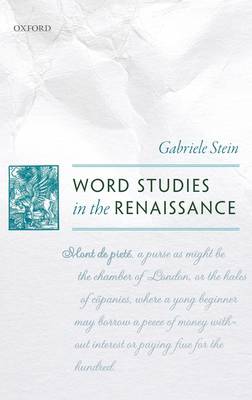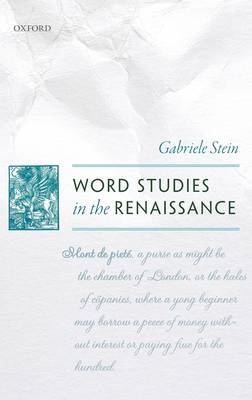
Je cadeautjes zeker op tijd in huis hebben voor de feestdagen? Kom langs in onze winkels en vind het perfecte geschenk!
- Afhalen na 1 uur in een winkel met voorraad
- Gratis thuislevering in België vanaf € 30
- Ruim aanbod met 7 miljoen producten
Je cadeautjes zeker op tijd in huis hebben voor de feestdagen? Kom langs in onze winkels en vind het perfecte geschenk!
- Afhalen na 1 uur in een winkel met voorraad
- Gratis thuislevering in België vanaf € 30
- Ruim aanbod met 7 miljoen producten
Zoeken
Omschrijving
The book examines the work of Renaissance lexicographers such as John Palsgrave, Claudius Hollyband, Richard Huloet, and Peter Levins, with particular focus on the author at work: the struggles of these lexicographers to understand the semantic range of a word and to explain and transpose it into another language; their assessment of different linguistic and cultural expressions, and their morphological analyses; and their efforts to find ways of structuring and presenting lexical information. Gabriele Stein explores the influence of the works by Ambrogio Calepino, Robert Estienne, Hadrianus Junius, and Conrad Gesner, and the extent to which bi- and multilingual dictionaries in the 16th century are often pan-European in character; she also provides the first in-depth and richly-illustrated discussion of the use of typographical resources to present the structure of lexical information.
Specificaties
Betrokkenen
- Auteur(s):
- Uitgeverij:
Inhoud
- Aantal bladzijden:
- 250
- Taal:
- Engels
Eigenschappen
- Productcode (EAN):
- 9780198807377
- Verschijningsdatum:
- 28/11/2017
- Uitvoering:
- Hardcover
- Formaat:
- Genaaid
- Afmetingen:
- 155 mm x 236 mm
- Gewicht:
- 539 g

Alleen bij Standaard Boekhandel
+ 370 punten op je klantenkaart van Standaard Boekhandel
Beoordelingen
We publiceren alleen reviews die voldoen aan de voorwaarden voor reviews. Bekijk onze voorwaarden voor reviews.









